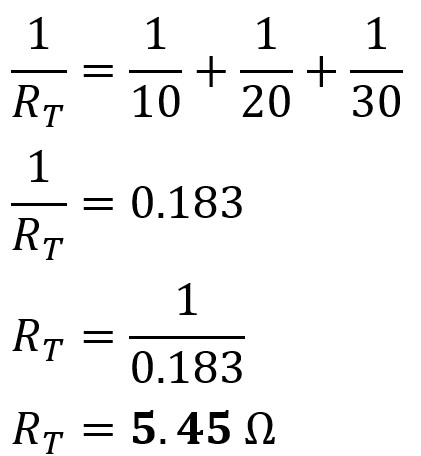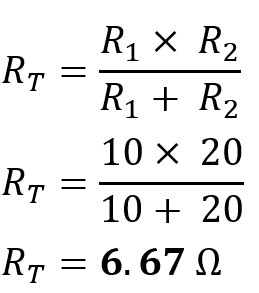Ohm's law explains the relationship between voltage, current and resistance in an electrical circuit. Here we will talk about resistors, but in the real world all conductors have resistance (however small) so this applies to absolutely all electrical circuits.
The current flowing through a circuit it proportional to the voltage applied to it and inversely proportional to its resistance. This is just a smart way of saying that a low resistance causes a higher current to flow and vice-versa.

Where:
I is the current measured in Amperes (A)
V is the voltage measured in Volts (V)
R is the resistance measured in Ohms ( )

The Ohm's law triangle is a way of remembering Ohm's law and how to transpose the formula.
If you want to make V the subject, cover the V and you get I x R. If you want to make I the subject, cover the I and you're left with I = V / R. If you want to find R, cover the R and you get R= V / I


When resistors are connected in series the total resistance is the sum of each resistance.




To calculate the total resistance when more than one resistor is connected in series we can use the formulae below. The total parallel resistance will always be lower than the lowest resistance resistor in the circuit.






